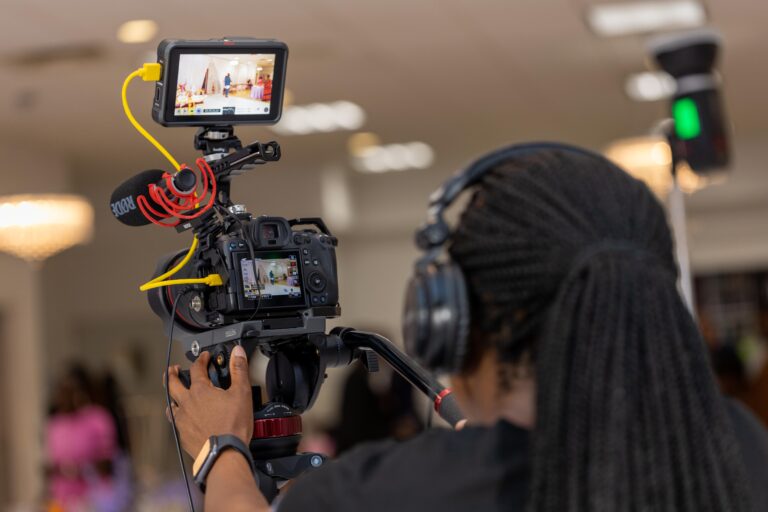Planning a wedding can be both exciting and overwhelming. From selecting the perfect venue to choosing the right photographer, every detail counts. This comprehensive wedding planning checklist will guide you through all the essential services involved in creating your dream wedding.
1. Set Your Budget
• Determine Overall Budget: Discuss with your partner and families to set a realistic budget that covers all aspects of the wedding.
• Allocate Funds: Break down the budget into categories such as venue, catering, photography, and attire. Prioritize spending based on what is most important to you.
• Track Expenses: Use a spreadsheet or wedding planning app to monitor spending and ensure you stay within your budget.
2. Choose a Date
- Seasonal Considerations: Decide the season and month that best suits your vision and budget. End of Spring, Summer, and fall are popular but often more expensive.
- Availability: Check the availability of key guests, such as family and close friends, as well as your desired venue and vendors.
- Special Dates: Consider anniversaries, holidays, or other significant dates that might add personal meaning to your wedding day.
3. Select a Venue
- Type of Venue: Based on your wedding theme and size, decide between options like a church, garden, beach, or banquet hall.
- Guest Capacity: Ensure the venue can comfortably accommodate your guest list, keeping in mind the layout for the ceremony and reception.
- Visit Venues: Schedule tours and discuss packages, amenities, and restrictions with venue coordinators. Ask about backup plans for outdoor venues in case of bad weather.
4. Photography and Videography
- Research Professionals: Look for photographers and videographers whose style matches your vision. Review portfolios and read reviews from past clients.
- Meet with Vendors: Discuss your vision, packages, pricing, and any special requests. Make sure they understand your expectations and timeline.
- Book Early: Popular photographers and videographers get booked quickly, especially during peak wedding seasons. Secure your date as soon as possible.
5. Decor and Lighting
- Theme and Colors: Choose a theme (e.g., rustic, modern, vintage) and color palette that reflects your style and complements the venue.
- Hire a Decorator: Work with a professional to design and execute your vision, including flowers, centerpieces, and table settings.
- Lighting: Consider ambient lighting, uplighting, and special effects like fairy lights or lanterns to enhance the atmosphere. Lighting can dramatically change the mood of your venue.
6. Catering and Drinks
- Menu Tasting: Schedule tastings with caterers to select your menu. Consider a variety of options to cater to different tastes and dietary requirements.
- Dietary Requirements: Ensure there are options for guests with dietary restrictions, such as vegetarian, vegan, gluten-free, or nut-free dishes.
- Bar Services: Decide on an open bar, cash bar, or a combination. Consider signature cocktails, wine, beer, and non-alcoholic options.
7. Music and Entertainment
- Hire a DJ or Band: Choose based on your music preferences and budget. A DJ can offer a wide variety of music, while a live band can provide a unique experience.
- Create a Playlist: Include must-play songs for key moments (e.g., first dance, bouquet toss) and any do-not-play songs.
- Entertainment: Consider additional entertainment options like a photo booth, caricature artist, or dancers to keep guests entertained throughout the evening.
8. Cake and Desserts
- Cake Tasting: Visit bakeries to taste and design your cake. Consider flavors, fillings, and decorations that match your theme.
- Design: Choose a cake that fits your theme, whether it’s a classic tiered cake, a modern naked cake, or something unique.
- Alternative Desserts: Add a dessert table or candy bar with a variety of sweets, such as cupcakes, cookies, or macarons, to offer guests more options.
9. Invitations and Stationery
- Save-the-Dates: Send these out 6-8 months before the wedding to give guests ample time to plan.
- Invitations: Mail invitations 6-8 weeks before the wedding. Include RSVP details, accommodation information, and any special instructions.
- Other Stationery: Consider additional items like programs for the ceremony, menus for the reception, and thank-you cards for after the event.
10. Attire
- Bride’s Dress: Start shopping 9-12 months before the wedding to allow time for fittings and alterations. Consider your theme and venue when choosing your dress.
- Groom’s Attire: Choose a suit or tuxedo that complements the wedding theme. Coordinate with the bride’s attire and the overall color scheme.
- Bridal Party: Coordinate dresses and suits for bridesmaids and groomsmen. Consider their comfort and preferences, and choose styles that complement each other.
11. Beauty and Grooming
- Hair and Makeup: Book trials and appointments for the bride and bridal party. Decide on styles that complement your dress and theme.
- Grooming: Schedule haircuts, shaves, and other grooming services for the groom. Consider a spa day or grooming package for the bridal party as well.
12. Transportation
- Vehicles: Arrange for transportation for the bridal party and guests, including options like limousines, vintage cars, or shuttle buses.
- Arrival and Departure: Plan the timing and logistics for arriving at the ceremony and reception venues. Ensure transportation is available for the end of the night.
13. Accommodations
- Guest Lodging: Reserve a block of rooms at a hotel for out-of-town guests. Provide accommodation details and booking information in your invitations or on your wedding website.
- Bridal Suite: Book a suite for the bride and groom’s wedding night. For convenience, consider a location close to the reception venue.
14. Officiant
- Choose an Officiant: Select someone who aligns with your beliefs and style. This could be a religious leader, civil officiant, friend, or family member.
- Ceremony Planning: Discuss the ceremony structure, vows, and any special readings or rituals you want to include.
15. Rentals
- Equipment: If the venue does not provide tents, chairs, tables, and linens, consider renting them. Coordinate with your decorator to ensure everything matches your theme.
- Decor: Rent additional decor items like arches, centerpieces, and backdrops. This can save money and reduce the hassle of purchasing and storing these items.
16. Favors and Gifts
- Guest Favors: Choose small tokens of appreciation for your guests, such as personalized items, edible treats, or keepsakes that reflect your theme.
- Wedding Party Gifts: To thank bridesmaids, groomsmen, and parents for their support, select thoughtful gifts. Consider personalized or handmade items for a special touch.
17. Rehearsal and Rehearsal Dinner
- Schedule Rehearsal: Plan the ceremony rehearsal and coordinate with key participants, including the bridal party and officiant.
- Dinner Planning: Organize a rehearsal dinner for the bridal party and immediate family. This is a great opportunity to relax and thank everyone involved in the planning.
18. Honeymoon Planning
- Destination: Choose and book your honeymoon destination. Consider your budget, interests, and the best time to visit.
- Travel Arrangements: Arrange flights, accommodation, and activities. Make sure your passports and any necessary visas are up to date.
- Packing: Prepare and pack for the honeymoon, keeping in mind the climate and activities planned.
Conclusion
Planning a wedding involves many details, but with this comprehensive checklist, you can ensure nothing is overlooked. Start early, stay organized, and enjoy the process of creating your special day. Remember, it’s not just about the destination but the journey to getting there. Happy planning!




